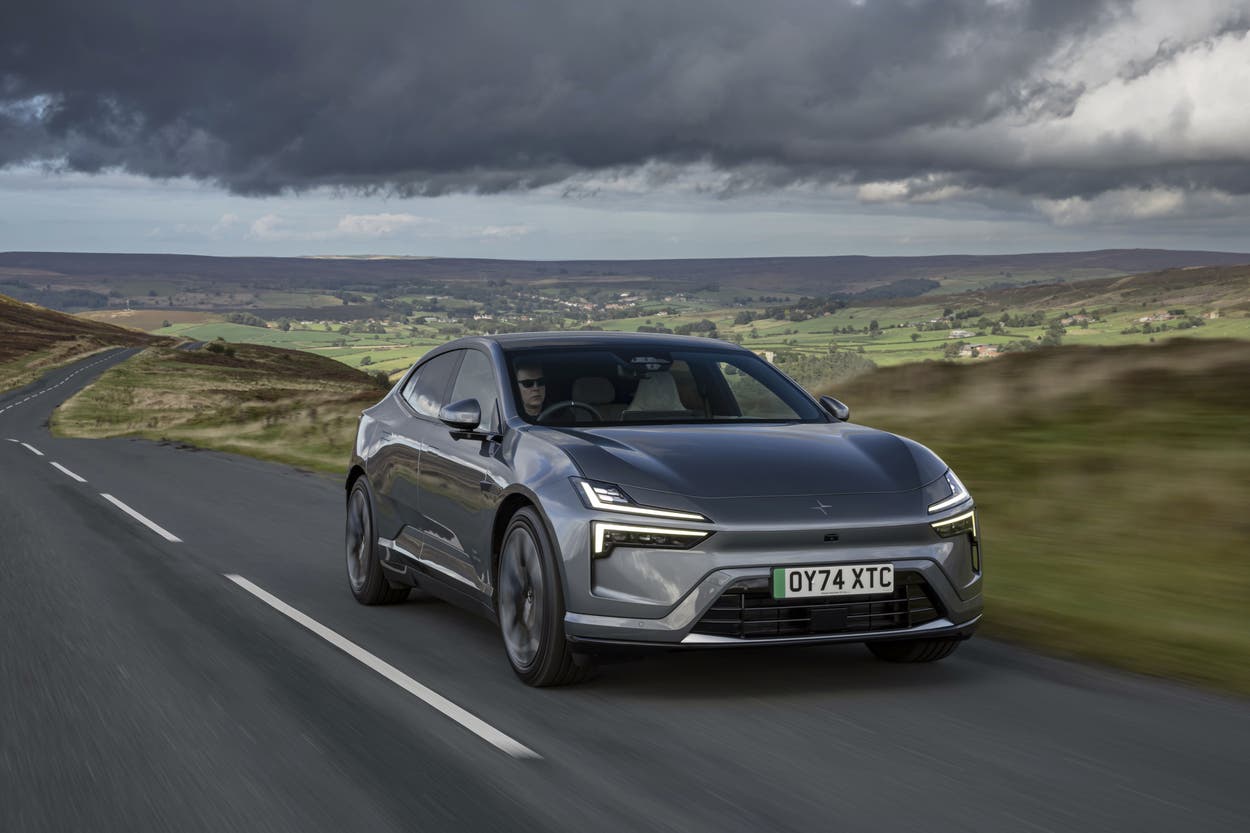In 2024, Polestar has once again proven its commitment to pushing the boundaries of automotive innovation with the launch of the Polestar 4, an electric vehicle (EV) that challenges conventional design norms. Its most striking feature? The absence of a rear windscreen, replaced by advanced sensors and cameras that stream a live feed to the rearview mirror. This bold approach reflects Polestar’s vision to integrate cutting-edge technology with groundbreaking design.

The Rear Windscreen Revolution: Function Meets Form
Polestar 4’s decision to forgo a traditional rear windscreen is more than just a design statement; it’s a reflection of purposeful engineering.
1. Why No Rear Windscreen?
Chief Technology Officer Lutz Stiegler explains that this decision was driven by two primary goals:
- Aerodynamic Efficiency:
Reducing drag requires a lower rear roofline, which makes a traditional rear windscreen impractical. The result is a sleek silhouette that enhances the car’s efficiency and aesthetic appeal. - Enhanced Interior Comfort:
The rear seats are designed with a comfort-first approach, prioritizing relaxation over visibility. Removing the windscreen complements this, creating a unique interior environment.
2. The Role of Technology
To compensate for the lack of a rear windscreen, Polestar 4 incorporates:
- Live Camera Feed:
Advanced sensors and cameras provide a continuous, high-resolution view of the rear surroundings on the rearview mirror’s display. - Seamless Transition:
While some drivers may initially find the absence of a traditional mirror disconcerting, Mr. Stiegler notes that most adapt within a few days, appreciating the superior visibility and functionality.
This innovative approach serves dual purposes: achieving aerodynamic goals while showcasing Polestar’s commitment to integrating “attractive technology” into its vehicles.
>>>U914479PHV for iData K3S
A High-Tech Ecosystem Inside the Polestar 4
Polestar 4 is not just about exterior innovation; its interior is a testament to how modern vehicles are becoming an extension of our digital lives.
1. Central Touchscreen Console
The Polestar 4 features a central touchscreen console that acts as the command center for both interior and exterior adjustments. Key highlights include:
- Google Maps for EVs:
A specialized version of Google Maps designed for electric vehicles, providing route planning based on battery charge levels, required recharge stops, and preferred battery reserves upon arrival. - Driver Profiles:
Much like Netflix profiles, Polestar 4 allows drivers to create personal profiles that save their preferences for display layouts, seat positioning, and more.
2. Driver Monitoring Systems
Polestar 4’s suite of sensors adds a layer of safety and convenience:
- Fatigue Detection:
The system monitors driver fatigue levels, offering alerts if signs of drowsiness are detected. - Eye Tracking:
Sensors track the driver’s gaze and provide nudges if attention drifts from the road.
These features ensure that the Polestar 4 delivers not only a comfortable drive but also a safer one.
Focus on Technology and Infotainment
Polestar is doubling down on technology to differentiate itself in a competitive EV market. Mr. Stiegler highlights the company’s focus on features that truly enhance the driving experience:
- Infotainment Systems:
Polestar continues its collaboration with Google to refine its infotainment offerings, ensuring a seamless and intuitive user experience. - Software-Driven Performance Tuning:
The Polestar 4’s driving dynamics are fine-tuned through extensive software involvement, providing the distinctive “Polestar feel” of firm suspension, responsive acceleration, and precise braking.
Innovative Materials and Sustainable Production
Beyond technology, Polestar is pioneering new approaches to vehicle production.
1. Bonded Aluminum Chassis
Polestar plans to build future vehicles, including the Polestar 4, using bonded aluminum. This technique offers several advantages:
- Lightweight Design:
A bonded aluminum chassis reduces the vehicle’s weight, improving efficiency and performance. - Fewer Rivets and Mixed Metals:
Simplifying the manufacturing process leads to greater sustainability and scalability for mass production. - High-Tech Manufacturing:
Polestar is the first automaker to master this production method at scale, setting a new benchmark in EV manufacturing.
>>>ER6C F2-40BL for Maxell ER6 ER6B ER6C OTC Robot PLC with White Plug
Driving the Future of Automotive Design
The Polestar 4’s innovative features underscore the company’s commitment to merging cutting-edge technology with sustainability and performance. By challenging conventions—like eliminating the rear windscreen—Polestar is creating a new paradigm for EVs.
While this approach may polarize opinions, it also reflects the brand’s bold vision to redefine what modern vehicles can be. For Polestar, it’s not just about making cars; it’s about crafting experiences that blend aesthetics, technology, and sustainability into a cohesive whole.